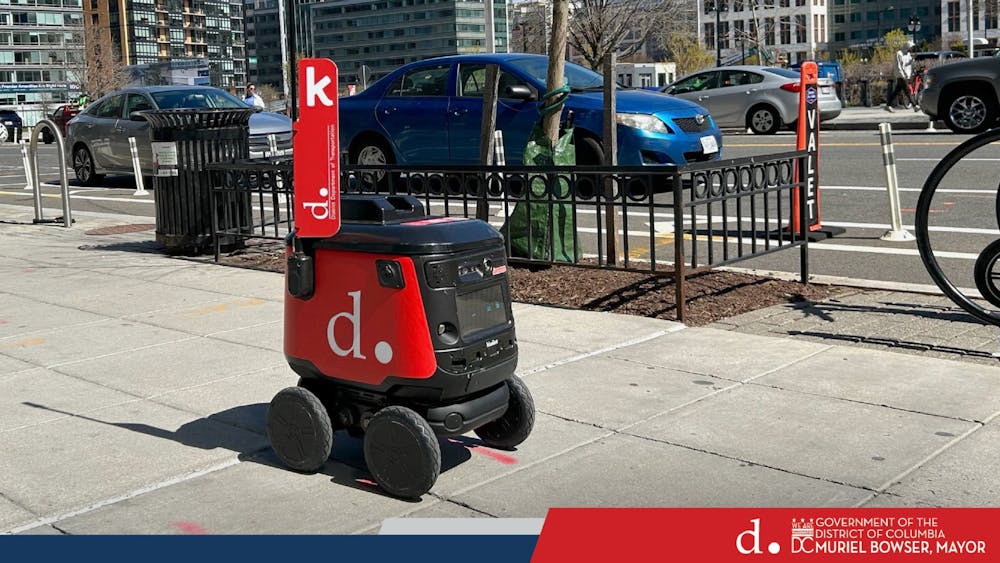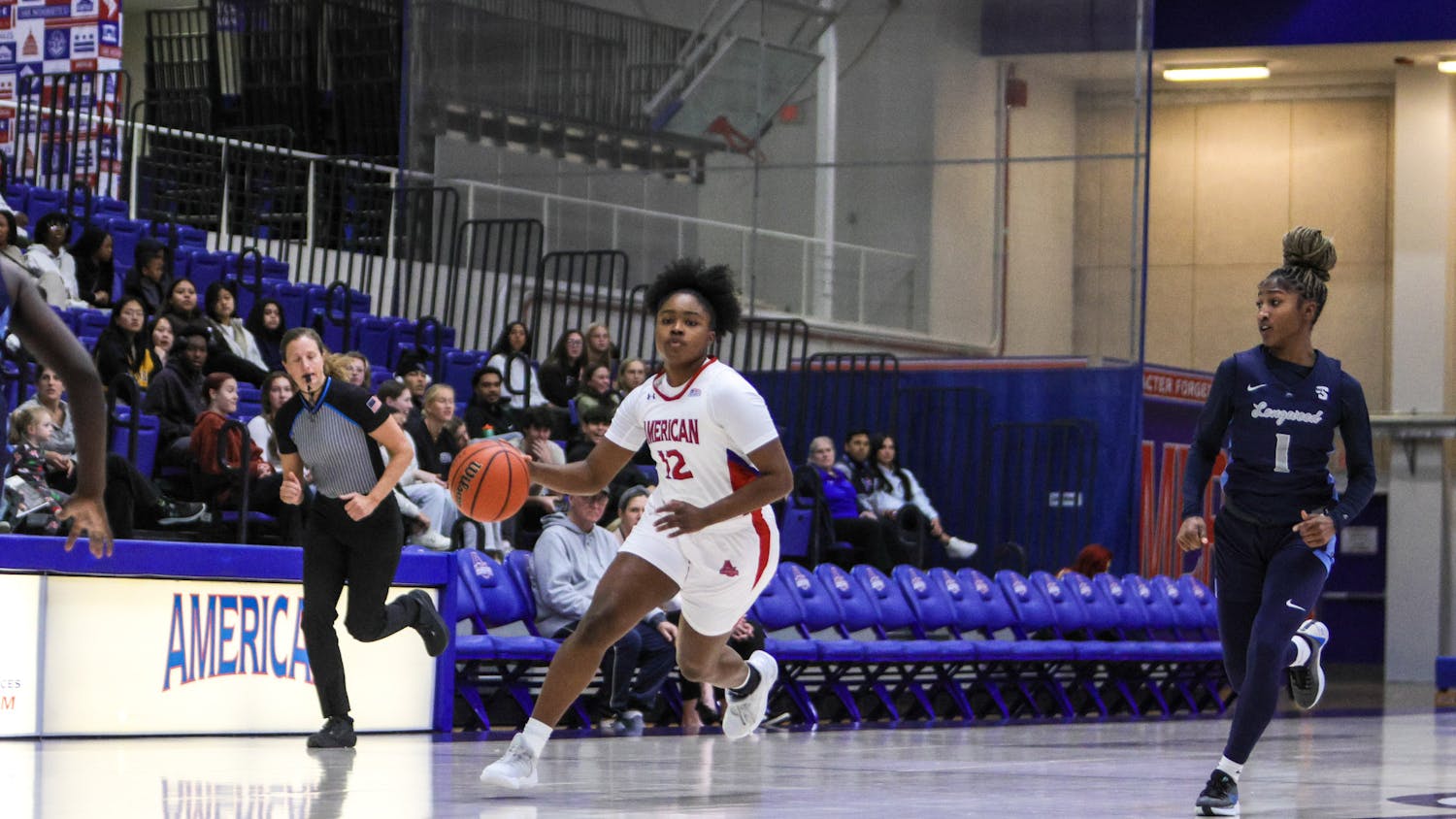The District’s Department of Transportation, also known as DDOT, recently ended a year and a half long pilot program which tested the use of a semi-autonomous robot for data collection and street sign inventory.
Stephanie Dock, the autonomous vehicles program manager at DDOT, said that DDOT knew of Kiwibots’ ability to survey sidewalk conditions, sparking an interest in helping D.C. manage infrastructure issues. The District is the first city to utilize the robots for this specific application.
“Where do they fill a gap potentially because of their sidewalk access, and how do we work with that?” Dock said.
DDOT established a pilot program, costing $10,000, and put one Kiwibot robot to work to collect data on street sign inventory in the Navy Yard neighborhood. The robot was also first tested on Georgia Avenue last year, prior to this fall’s pilot program.
“We’re pursuing a number of different potential ways to continue to assess our sidewalks,” Dock said, noting that automation would help streamline the process.
While some worried the Kiwibot was DDOT’s new parking ticket patroller, Dock dispelled this suspicion, saying that the robots “are not the best asset for that.” Dock noted that DDOT has other technological options for traffic enforcement, such as cameras on traffic lights and stop signs.
Confusion initially spurred from advertising on the robot which shows the letter “d” with a dot next to it, indicating DDOT’s responsibility for their street presence.
Addressing other community concerns, Dock explained the Kiwibot posed no risk as a public safety hazard. Under the rules of DDOT’s pilot program, the robot was not allowed to travel faster than 10 mph, but tended to roll along even slower.
“In general, because they’re moving around people and objects and having to pay attention to things, they’re not really going faster than 3 miles an hour at best,” Dock said of the robots, which were constantly under the supervision of a human attendant during data collection.
According to Kiwibot Co-Founder, David Rodriguez, the Kiwibots are designed to prioritize human needs and engender a “system that creates social good.”
The company, based in Berkeley, California, got their start on college campuses more than seven years ago as a food delivery service.
In the years since the company’s start, the robots have upgraded their scope of ability. While food delivery is still the most popular use, functions now include advertising and sidewalk infrastructure monitoring, as has been piloted in D.C.
Kiwibot’s Data Manager, Lena Franco, explained how the robots can map their route by detecting hazards and measuring levels of risk. Rodriguez said this mapping ability inspired him to think about how the robots might aid in accessibility efforts.
“It’s kind of like if this street is not good enough for robots, it’s not good enough for a wheelchair,” Rodriguez said, after discovering streets where even the robots introduced to the environment stumbled through inaccessible paths.
In Pittsburgh, Kiwibot has partnered with the Carnegie Library to deliver medicine and books, and in Santa Monica, California, the Kiwibots have been implemented as a part of their Zero Emission Delivery Zone initiative.
“At a philosophical standpoint, it took us from being the company that just delivers burritos to reach students, to a company that is actually helping people in a meaningful way,” Rodriguez said.
This article was edited by Mackenzie Konjoyan, Tyler Davis and Abigail Turner. Copy editing done by Luna Jinks, Sabine Kanter-Huchting and Ella Rousseau.





